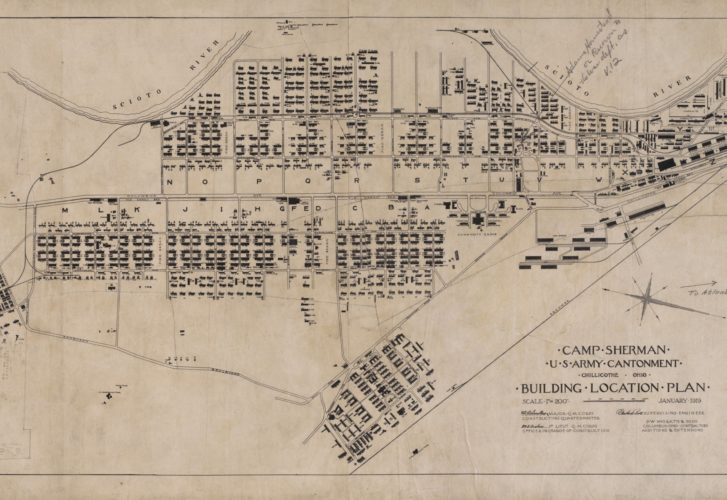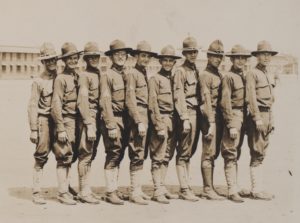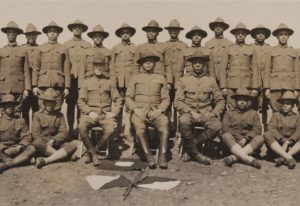Camp Sherman: “Ohio’s Soldier Factory”

Once the United States officially joined World War I on April 2, 1917, the federal government quickly organized committees charged with building a national infrastructure for mobilizing hundreds of thousands of troops. In an incredibly short period of time, the U.S. government constructed sixteen military training camps across the country, one of which was built right here in Ohio!

Camp Sherman’s construction began in June 1917 and was completed by September. With over 2,000 buildings on its campus, and the capacity to house 40,000 men and 12,000 horses, Camp Sherman was the third largest training camp in the United States. By the end of the war, more than 120,000 troops were trained at Camp Sherman, earning the cantonment its nickname “Ohio’s Soldier Factory.” Units from many divisions passed through Camp Sherman, but the 83rd Infantry Division was the only to receive all its training there, and was the first from Camp Sherman to go to Europe in June 1918. Other divisions trained at Camp Sherman include parts of the 84th Division and the 95th Division, which was disbanded after the war was over and never saw combat. Several African American units were trained at Camp Sherman as well, including the 317th Engineers Infantry, 317th Engineers Train, and the 325th Field Signal Battalion, all of which joined the 92nd “Buffalo” Division in France. African American soldiers served in segregated units at the time, almost always led by white officers.

Not everyone who lived at Camp Sherman was a soldier. The expansive camp required many employees and volunteers to function efficiently, including women who often volunteered as nurses or camp workers. As conscientious objectors, many Mennonites, Amish, and Quakers worked at Camp Sherman after applying for military exemption.
Soldiers received all types of training at Camp Sherman, such as weapons and artillery training, trench construction, and trench warfare training. Even though troops had little time to spare, Camp Sherman, often in partnership with the Y.M.C.A., made available many recreational activities. Soldiers could join a Y.M.C.A. baseball team, join their regimental band, study military tactics or read for pleasure in the camp library, watch a film at the camp’s movie theater, or spend free time in the community house. In addition, soldiers could visit Chillicothe, which was often where soldiers’ families would meet them for a visit. Take a look at these letters from Harlan W. Johnson to his family for a first-hand account!

To learn more, click here to see dozens of photographs from Camp Sherman in the World War I Collection on Ohio Memory! Digitized as part of the Little Stories of the Great War: Ohioans in World War I project, these photographs provide us with visual accounts of Ohio men and women’s contributions to World War I.
Thanks to Kristen Newby, project coordinator at the Ohio History Connection, for this week’s post!



Leave a Reply
You must be logged in to post a comment.